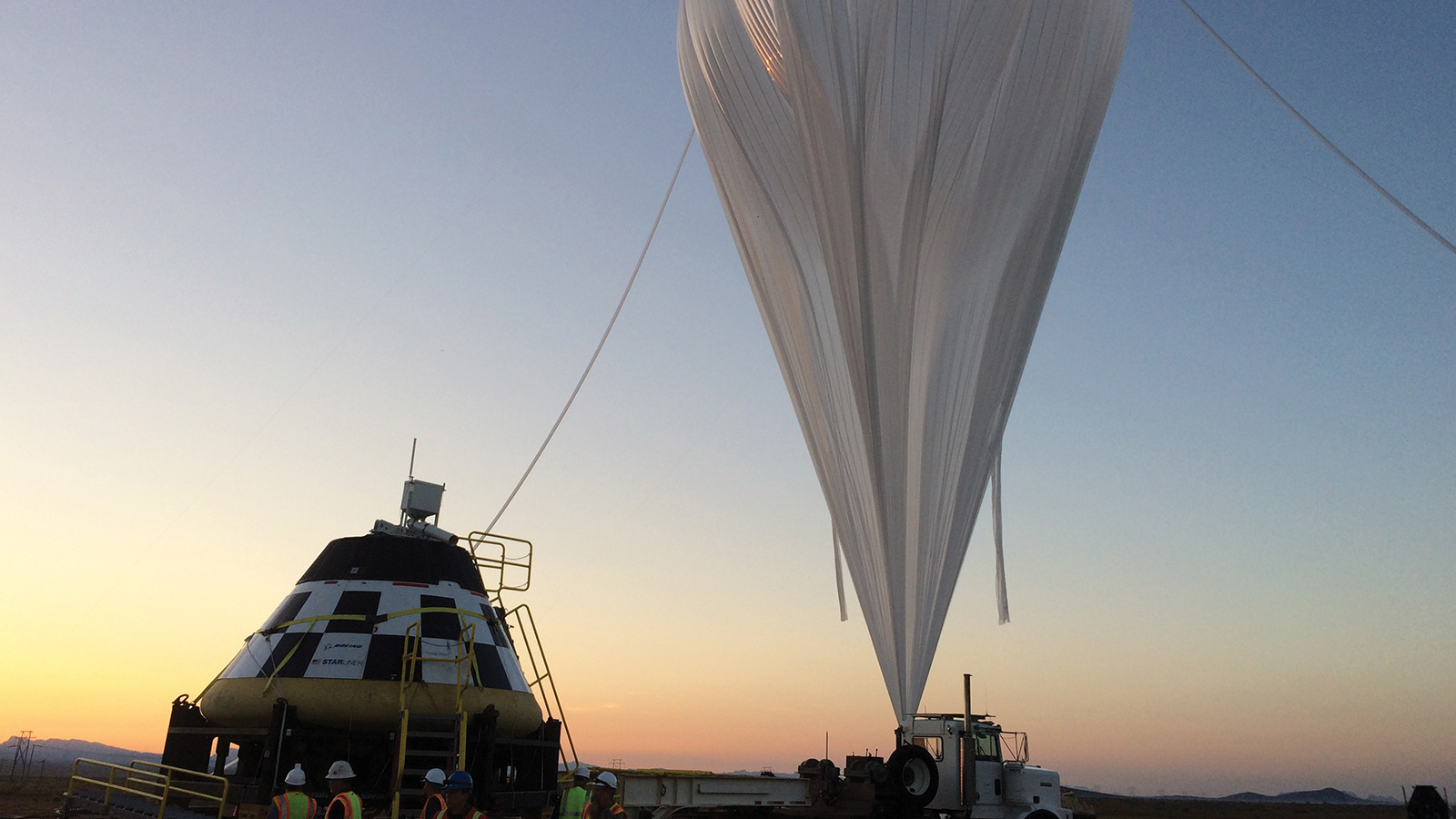Stay Up to Date
Submit your email address to receive the latest industry and Aerospace America news.
The Balloon Systems Technical Committee supports development and application of free-floating systems and technologies for buoyant flight in the stratosphere and atmospheres of other planets.
Raven Aerostar balloons logged approximately 12,500 flight days in the stratosphere supporting scientific, commercial and engineering development missions. In early August, the South Dakota-based company completed a duration-demonstration flight that lasted 59 days. After launching from Raven Aerostar’s flight operations facility near Sioux Falls, the balloon’s altitude was set by an automated navigation system that uses a combination of weather data and the motion of the balloon at various altitudes. The balloon was kept within 100 nautical miles of its intended target point for 30% of the flight. A second balloon with improvements to the automated navigation system was launched on Aug. 19, and the mission was still progressing as of Nov. 1. The system was directed to target areas in South Dakota, the Texas Panhandle and northern Florida and to remain within 100 nautical miles of its various targets for 100% of the time while in station-seeking mode. Raven Aerostar also demonstrated tactical launch balloons, with payloads up to 23 kilograms, that can be operated by a two-person crew with a minimal logistics footprint.
In January and again in June, Near Space Corp. conducted heavy-lift balloon drop tests in support of recovery parachute qualification for Boeing’s Starliner Commercial Crew development program. NSC completed this multiflight heavy-lift campaign with a final drop of 10 tons for Boeing in September.
NASA sponsored a set of space mission studies in 2020 to serve as inputs to a new decadal survey that will set priorities for the agency’s planetary science missions. One of those studies was for a Venus flagship mission that would send an aerobot (robotic balloon), lander and orbiter to Earth’s closest neighbor. The proposed Venus aerobot is based on variable-altitude balloon technology derived from terrestrial vehicles such as Google’s Loon, Arizona-based World View’s Stratollite and the author’s controlled meteorological balloons. Early prototyping work on this Venus aerobot technology is underway at NASA’s Jet Propulsion Laboratory in California and its partners NSC and Thin Red Line Aerospace of Canada.
In April, NASA’s Planetary Science and Technology through Analog Research program awarded a team of JPL researchers and their partners funding to conduct a campaign over the state of Oklahoma to monitor earthquake activity with infrasound sensors carried on solar-heated hot-air balloons. This work builds on JPL’s instrumentation and data-analysis techniques for seismic-event detection from balloons, paving the way for an aerobot to search for seismic activity on Venus.
NASA’s Antarctic balloon program began the year with a 33-day, two-circuit, circumpolar flight of Washington University’s Super-Trans-Iron Galactic Element Recorder instrument as well as a near-150-day flight of a small super pressure balloon test flight of Dartmouth College’s Balloon Array for Radiation-belt Relativistic Electron Losses, formerly the Radiation Belt Storm Probes mission, to study Earth’s radiation belts. In response to the covid-19 pandemic, flight campaigns were suspended in March, and the NASA Balloon Program adjusted by focusing on development of the sensor and instrumentation suite for its Super Pressure Balloon. Balloon manufacturing and some operational support elements restarted in July. Advances were also made in over-the-horizon and line-of-sight telemetry systems used on balloon flights. Useable science data rates through the low-cost Tracking and Data Relay Satellite System transceiver increased from 92 kilobits per second to 960 kbps, and line-of-sight rates increased from 1 megabits per second to 12 Mbps.
In February, CNES, the French space agency, completed a series of technical and scientific validation flights for the Stratéole 2 long-duration balloon campaign. CNES released eight pressurized balloons in late 2019 from the Seychelles Islands; the balloons flew well into 2020. The longest flight was 107 days with an average of 85 flight days per balloon.
Contributors: Russ Dewey, Debora Fairbrother, Jeffrey Hall, Mike Smith and André Vargas
Related Posts
Stay Up to Date
Submit your email address to receive the latest industry and Aerospace America news.




